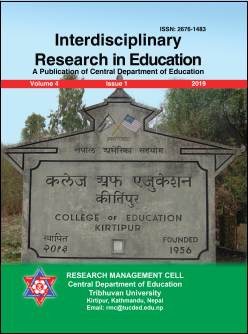Content Delivery Modes for Students with Visual Impairments in Integrated Schools of Nepal
DOI:
https://doi.org/10.3126/ire.v5i1-2.34735Keywords:
Integrated schools, curriculum, content delivery modes, students with visual impairments, general education teachers, special education teachers, resource roomAbstract
The purpose of this study is to explore the instructional approaches that have been using by teachers working in integrated schools for years to optimize the access of visually impaired students to general education curriculum. This study was guided by constructivist paradigm followed by case study design. Altogether eleven teachers were selected from three integrated schools located in Kathmandu Valley by using purposive sampling method. Qualitative data were gathered by using semi-structured interview, classroom observation, and document analysis to get deeper understanding on the studied phenomenon. And then garnered information were edited, transcribed, coded, and thematized to draw meaningful results and conclusions. A number of instructional techniques such as providing materials into accessible format, placing students with low vision near to chalkboard, ability based grouping, pairing blind and sighted students together, etc. were applied by targeting the distinct learning needs of students with visual impairments. But most of these instructional techniques were not used on routine basis because of poorly trained teachers, limited instructional materials, and high students-teacher ratio. Therefore, proper training, sufficient instructional materials, and manageable size of the classroom should be arranged to optimize the access of visually impaired students to general education curriculum.
Downloads
Downloads
Published
How to Cite
Issue
Section
License
This license enables reusers to distribute, remix, adapt, and build upon the material in any medium or format for noncommercial purposes only, and only so long as attribution is given to the creator.




